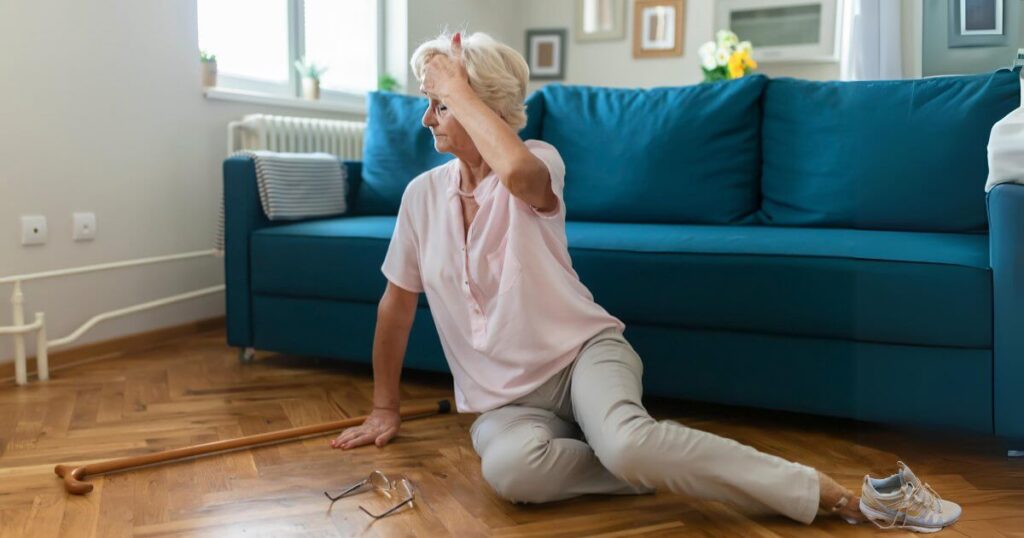Fall Prevention: 5 Essential Tips to Protect Seniors from Falls

Falls among the elderly are a major concern due to the significant health risks and loss of independence they can cause. Effective fall prevention strategies are critical in senior living communities and households alike. Here’s a deeper look into five essential tips that can help prevent falls among elderly residents, combining both practical measures and preventive strategies.
1. Enhance Lighting Throughout Living Spaces
Adequate lighting is crucial for preventing falls, especially as vision deteriorates with age. Here’s how to optimize lighting for safety:
- Brighten Key Areas: Ensure that all hallways, staircases, bathrooms, and bedrooms are well-lit. Consider higher wattage bulbs and fixtures that evenly distribute light to eliminate shadows and dark corners.
- Night Lighting: Install automatic night lights in bedrooms, hallways, and bathrooms. These should activate automatically in low light conditions, providing a safe pathway when seniors are most vulnerable, such as during nighttime bathroom trips.
- Accessible Light Switches: Place light switches at the entrance of each room to ensure they are easily accessible. Consider illuminated switches that glow in the dark for easy visibility.
2. Create a Safe and Organized Living Environment
Reducing environmental hazards is key to preventing falls. Focus on these areas:
- Declutter Regularly: Keep floors clear of clutter. Secure cords and wires away from walking paths, and regularly check spaces to keep them tidy and obstruction-free.
- Secure Carpets and Rugs: Use double-sided tape or non-slip backing to keep rugs and carpets in place. Alternatively, remove high-pile rugs that can catch on shoes or walkers.
- Furniture Placement: Arrange furniture to create clear pathways. Ensure that furniture is stable and does not wobble, as it may be used for support.
3. Implement Safety Adaptations in High-Risk Areas
Simple modifications can significantly increase safety for seniors:
- Bathroom Safety: Install grab bars in the shower, by the bathtub, and next to the toilet. Use non-slip mats inside and outside the tub and consider a shower chair or bench for added safety.
- Stair Safety: Ensure that handrails are sturdy and present on both sides of any stairway. Consider visibility enhancements like contrasting color strips on steps to outline edges more clearly.
- General Adaptations: Lower shelves in kitchens and closets to reduce the need for climbing or reaching high, which can lead to imbalance and falls.
4. Promote the Use of Proper Footwear
Appropriate footwear is essential for preventing slips and falls:
- Non-slip Soles: Choose shoes with good traction to prevent slips, especially on slick surfaces.
- Proper Fit: Shoes should fit snugly and not slip off the feet. Avoid using open-back shoes or slippers without adequate heel support.
- Indoor Footwear: Encourage the use of indoor shoes that are easy to put on and take off, supporting safe indoor navigation.
5. Encourage Physical Activity and Regular Health Assessments
Maintaining physical health is crucial for fall prevention:
- Balance and Strength Exercises: Engage seniors in exercises like Tai Chi, yoga, or simple strength training to enhance balance, flexibility, and muscle strength.
- Regular Health Check-ups: Regular visits to healthcare providers can help manage medications and chronic conditions that may affect balance. Vision tests should be conducted annually to ensure that eyeglasses are up to date.
- Educational Workshops: Offer workshops or sessions on fall prevention strategies, educating seniors about how to navigate safely around their homes and what to do if they feel unsteady.
By implementing these detailed preventive measures and encouraging a proactive approach to health and environment management, senior living communities and caregivers can significantly reduce the risk of falls among elderly residents. Integrating these strategies with technological solutions like EyeWatch LIVE™ provides an additional layer of safety, ensuring that seniors are not only protected by their environment but also monitored by advanced systems that can respond instantly to any incident. Together, these approaches form a robust defense against one of the most common and dangerous risks facing seniors today.
